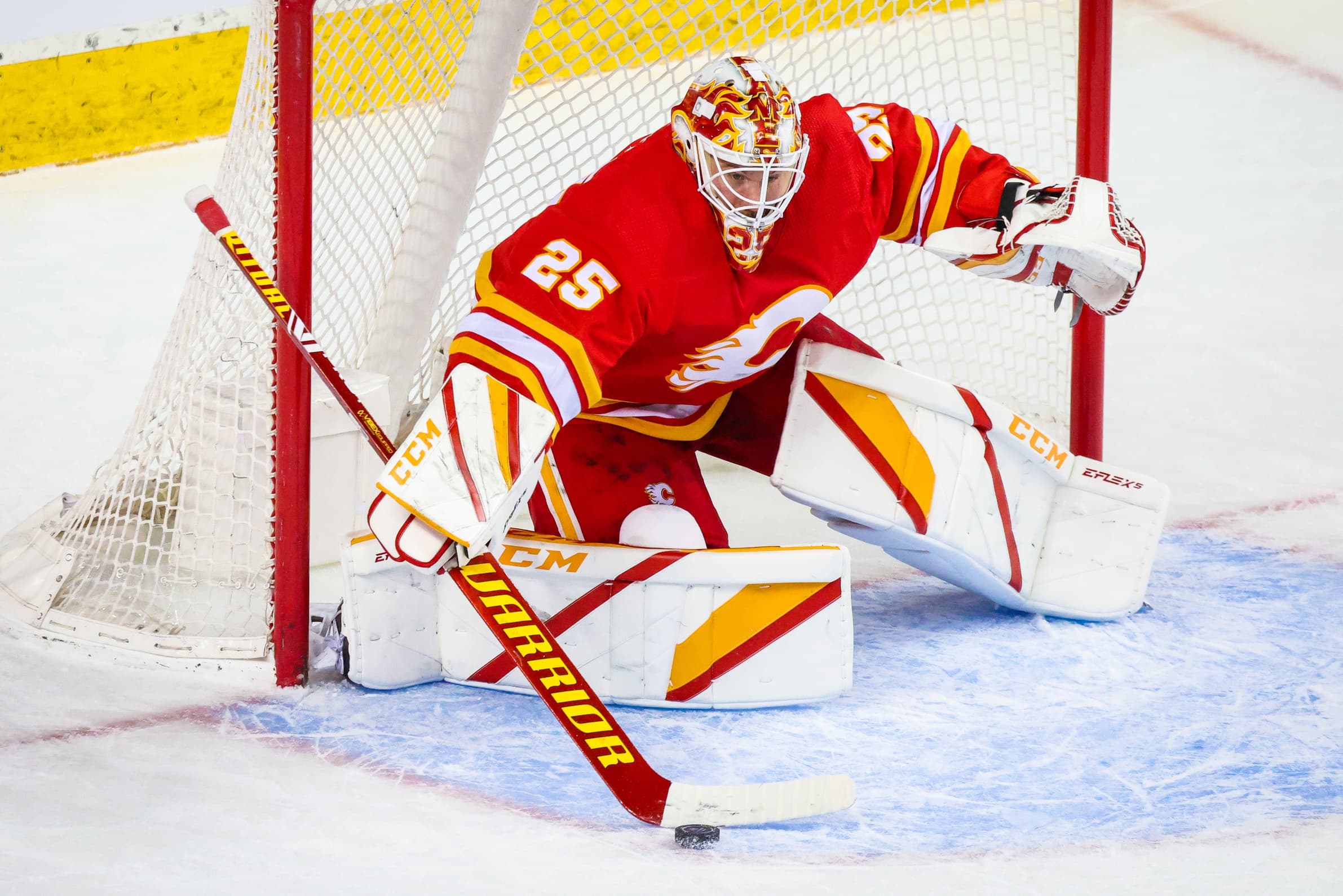Nation Sites
The Nation Network
FlamesNation has no direct affiliation to the Calgary Flames, Calgary Sports and Entertainment, NHL, or NHLPA
What’s working (and not) for the Flames so far

Photo credit: Sergei Belski/USA Today Sports
The Calgary Flames have played 181 minutes of hockey thus far in 2020-21’s regular season, so obviously now’s the time for sweeping generalizations about how things are going.
Well, no, but we have some limited data to make limited conclusions about what’s working (or not) for the club thus far.
What’s working
Well, the Flames backed up the proverbial Brinks truck to Jacob Markstrom in the off-season in an effort to finally end the decade-long goaltending carousel. And good news so far, Markstrom has been excellent. He stole the team a point over two rough periods in Winnipeg and he held them in during one rough period against Vancouver in their last outing, and the whole point of spending big money on a goalie is that he’ll hold the team in games. So far, so good for Markstrom.
Our pal Pat Steinberg went into a good amount of detail about the excellence of the new top line – I’m invoking the Iginla Rule: the highest-paid player plays on the top line by definition – so we don’t need to get too in depth about how good Elias Lindholm, Matthew Tkachuk and Dillon Dube have been as a unit. They’ve been able to start frequently in the defensive zone – starting around a third of their shifts in the offensive zone per Natural Stat Trick and around 45% of their face-offs in the O-zone – and face off against the other team’s top units, yet they’ve boasted by far the top shot attempt and expected goals performances on the team.
(Also quite good? The “third line,” as Mikael Backlund, Andrew Mangiapane and (primarily) Josh Leivo have gotten slightly more offensive zone time than the Tkachuk line and performed slightly “worse,” but still very impressively given the quality of players they’ve been facing.)
We’ll need to see if the two older players can keep it up, but so far the Flames’ blueline mix has worked pretty well. If you were skeptical about veterans Mark Giordano and Chris Tanev being joined by two guys in their early 20s (Rasmus Andersson and Noah Hanifin), a rookie coming off a major injury (Juuso Valimaki) and a guy returning from Russia (Nikita Nesterov), you weren’t alone. But so far, the Flames have been able to use the establish quartet to eat up tough minutes and give Valimaki and Nesterov offensive zone starts.
We’ll get into more detail on his emergence in the near future, but Andersson’s addition to the first power play unit has been quite successful so far. Not only are the Flames scoring many PP goals – six of their 11 goals have been with a man advantage – but they’re earning their goals. Per Natural Stat Trick, the Flames are seventh in expected goals for (per 60 minutes) on the PP, an indication that they’re scoring because they’re getting chances.
Heading into the season, most projections of the Flames’ salary cap situation suggested incoming peril. The club was expected to carry 22 players and have just $223,000 in space. For the entire season. (Yikes.) But a willingness to roll the dice on waivers for folks like Derek Ryan and Oliver Kylington paid off, and our projections have them amassing over $100,000 in cap space just 10 days into the season. They won’t be able to keep stashing Ryan on the taxi squad, as his waiver exemption will probably expire in early February once he dresses for 10 games, but in the meantime they’ve managed to get creative and create some breathing room.
Finally, for a team that has had to rely on dramatic comebacks and has given up a lot of early goals during the last few years, the Flames haven’t spent much time chasing. On a per-game basis, the Flames have had a lead the second-most and been trailing the fourth-least. It’s early and it doesn’t mean a ton, but at least they’re not burning themselves out trying to chase in games.
What’s not working
The Flames have two forward lines that are working well. On the de facto second line, Johnny Gaudreau and Sean Monahan have been playing primarily with Dominik Simon and they’ve been fine – they’re not underwater in shooting metrics and they were good in their last game against Vancouver. What’s not working is the fourth line jumble, as the Flames have used some combination of Milan Lucic, Derek Ryan, Sam Bennett and Joakim Nordstrom as a unit at any given time and they’ve been bleeding shots and scoring chances. It’s tough to criticize them too severely given the small sample size, but in every game they’ve disrupted the momentum that the other forward groups have managed to generate.
Finally, the penalty kill hasn’t given up too many goals, but their success has been somewhat of a mirage. Per Natural Stat Trick, the Flames are 27th in expected goals against on the PK – meaning that opposing PPs would be expected to score the fourth-most goals against them based on the quality of chances they’ve allowed. Why haven’t they? Markstrom. The goalie has been their top penalty-killer, but they need to do a bit more to take away chances and make his job a little bit easier.
Breaking News
- FlamesNation Mailbag: Sizing up the season in mid December
- Flames prospect Axel Hurtig is leading by example with the WHL’s Hitmen
- Wranglers Recap: Penalty riddled game sparks a late comeback overtime win for Calgary
- Flames’ Zayne Parekh aiming to make the most of his World Junior experience
- Scotia Place will hit some key milestones in 2026 after a year of progress below ground
